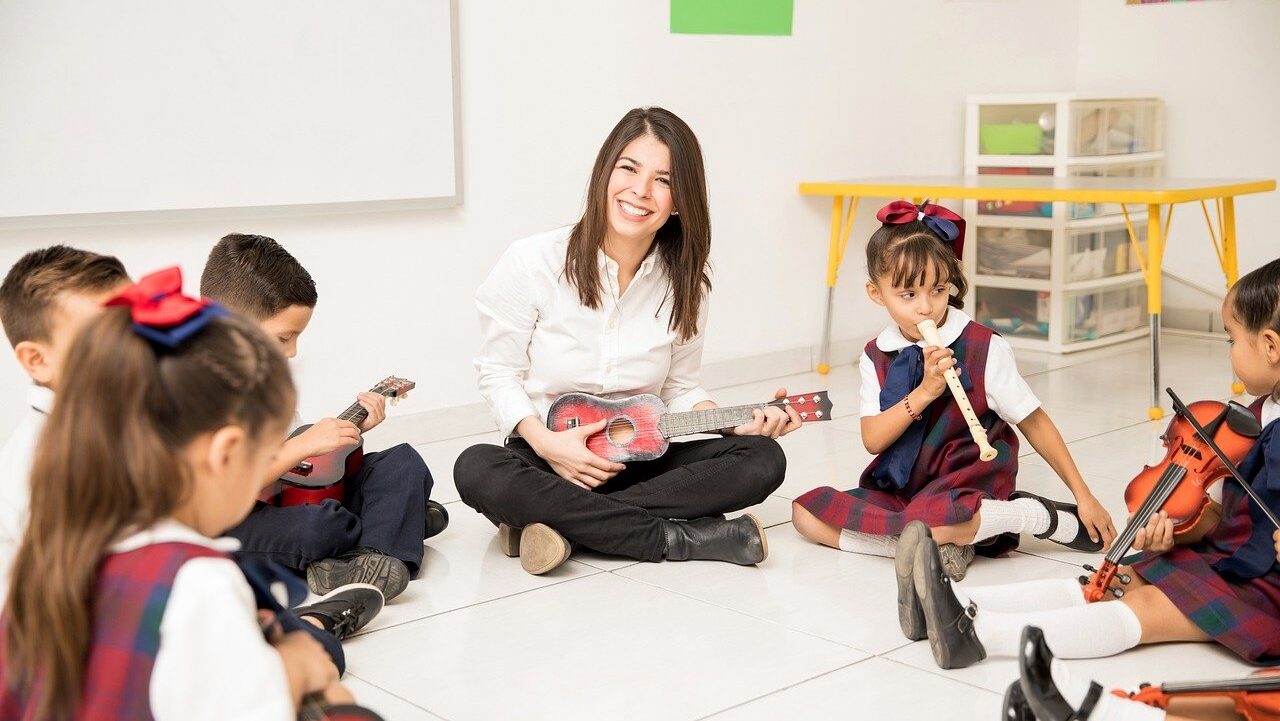Written by: Alancia King, Crystal Williams, PhD, Michaelene Ostrosky, PhD, and Robyn DiPietro, EdM
As discussed in a previous blog post, children’s temperament influences their social-emotional competence and behavior. Thus, it is important to consider how to intervene when needed to support positive outcomes for all children. Yavuz-Müren and colleagues (2022) summarize some of the temperament-based interventions that exist. According to these researchers, interventions can be universal (e.g., used with all children to prevent temperament-related problems) or targeted (e.g., used with specific children who need additional support). Overall, temperament-based interventions focus on strengthening the skills of children’s caregivers (e.g., parents, teachers, childcare providers). Iverson and Garstein (2018) suggest four goals of temperament-based interventions:
- Improve caregivers’ understanding of how a child’s temperament can influence their behaviors
- Increase caregivers’ responsivity to a child to better improve their relationship with the child
- Teach caregivers numerous evidence-based practices to increase their social-emotional competence and reduce children’s challenging behaviors
- Help children use various evidence-based practices to improve self-regulation
Studies have shown the positive benefits of caregiver education and anticipatory guidance as it relates to a child’s temperament profile (Cameron et al., 2013; Dadds & Roth, 2008; Luke et al., 2017; McCormick et al., 2015). These practices can help caregivers better foster positive caregiver-child interactions, manage children’s behaviors, and decrease future psychiatric diagnoses.
In the following section, we use case studies introduced previously regarding Benjy and Claire to illustrate what temperament-based interventions might look like in practice for children with a variety of temperament profiles.
Benjy is four years old, attending preschool for the first time. He is already beginning to readd and has advanced numeracy skills. Benjy’s teachers reached out to his family to discuss ways they could better support his transition into preschool, given his temperament profile (negative emotionality). At the meeting, Benjy’s teachers begin by discussing Benjy’s strengths. They then share their concerns about his lack of interest in and adverse responses to daily activities and interacting and playing with his peers. Benjy’s teachers ask his parents if they have similar concerns at home and what they believe helps him. Benjy’s parents are concerned about his reactivity during new situations, outings, and when interacting with extended family and friends. However, the only thing they have found to help so far is avoiding these situations. After learning this, Benjy’s teachers suggest taking a few weeks to learn more about negative emotionality and evidence-based practices that are effective for children with this temperament profile. After three weeks, Benjy’s teachers meet with his parents again. During this meeting, his teachers share what they learned about negative emotionality and evidence-based practices that can be used. They go on to inform his parents of several practices they would like to try with Benjy:
| Evidence-Based Practice | Description | Target Outcome |
| Positive Descriptive Feedback | Strengths-based feedback that tells the person receiving it what specific behavior or skill is being acknowledged (e.g., What a good friend you are. You shared the blocks with Aiden.) | Call Benjy’s attention to appropriate behaviors or skills which encourages him to demonstrate them more often |
| Visual Aids: First-Then Schedule | Visual schedule with pictures, drawings, or objects that present what currently needs to be done (first) and what will be done next (then) | Let Benjy know what is expected of him currently and what will come next |
| Visual Aids: Timer | A visual timer that utilizes colors to show how much time is left for a particular activity or task | Help Benjy understand how long he has left at an activity or task |
| Breaks Throughout the Day | Pauses during an activity or task throughout the day as needed | Allow Benjy to walk away and calm down when he is overwhelmed or overstimulated by a situation |
Next, his teachers ask Benjy’s parents for feedback on the evidence-based practices and if there is anything else they think should be included. After the parents give input and express their desire to keep an open line of communication, the teachers agree to send short “How My Day Went” notes home with Benjy daily with more detailed notes at the end of the week.
Claire is four years old and is often referred to by adults as a social butterfly. Claire’s parents saw a poster in their doctor’s office about a parent training program on temperament and preventing internalizing and externalizing behaviors. They decided to sign up for the classes. During the program, Claire’s parents learned about temperament profiles, having positive expectations for children based on their temperament profile, and evidence-based practices to increase children’s social competency. Overall evidence-based practices include modeling techniques and constructing social narratives. The parents learn that when children show high levels of the positive emotionality (PE) temperament profile (as Claire does), they can struggle with regulation and social competence, as seen in her adverse reaction when peers do not want to play with her. Her parents decide to implement the following evidence-based practices with Claire:
| Evidence-Based Practice | Description | Target Outcome |
| Peer or Adult Modeling | A peer or adult demonstrates desired behaviors or actions in certain situations so others can learn and initiate them | Show Claire alternative ways in which she could respond when a peer does not want to play with her |
| Constructing Social Narratives | Short stories written by an adult and child describing social situations, often ones the child struggles with, and appropriate versus inappropriate responses; these narratives call the child’s attention to key details of a situation and how characters in the story feel | Help Claire learn empathy and perspective-taking |
After learning these two evidence-based practices, Claire’s parents share them with her teachers and discuss implementing them during the school day, as well as at home.
In a forthcoming blog post we will look at temperament-based interventions that can support children with temperament profiles like those of Justin and Ariana.
References
Cameron, J. R., Rice, D. C., Sparkman, G., & Neville, H. F. (2013). Childhood temperament-based anticipatory guidance in an HMO setting: A longitudinal study. Journal of Community Psychology, 41(2), 236-248. https://doi.org/10.1002/jcop.21526
Dadds, M. R., & Roth, J. H. (2008). Prevention of anxiety disorders: Results of a universal trial with young children. Journal of Child and Family Studies, 17(3), 320-335. https://doi.org/10.1007/s10826-007-9144-3
Iverson, S. L., & Gartstein, M. A. (2018). Applications of temperament: A review of caregiver-
focused temperament-driven interventions. Early Education and Development, 29(1), 31–52. https://doi.org/10.1080/10409289.2017.1341805
Luke, F., Chan, C. C., Au, A. & Lai, S. M. K. (2017). Adaptive parenting for alleviating young children’s shyness: A randomized controlled trial of an early intervention program. Infant and Child Development, 26(6). https://doi.org/10.1002/icd.2030
McCormick, M. P., O’Connor, E. E., Cappella, E., & McClowry, S. G. (2015). Getting a good start in school: Effects of INSIGHTS on children with high maintenance temperaments. Early Childhood Research Quarterly, 30, 128-139. https://doi.org/10.1016/j.ecresq.2014.10.006
Yavuz-Müren, H. M., Korucu, I., & Selçuk, A.B. (2022). Temperament and social development in childhood. In P. K. Smith & C. H. Hart (Eds.), The Wiley-Blackwell handbook of childhood social development (pp. 297-307). John Wiley & Sons Ltd. https://doi.org/10.1002/9781119679028.ch16
Image Credit: Pixabay.com, CC0













